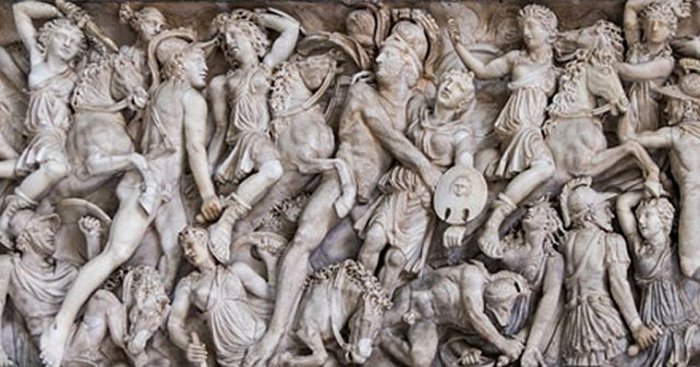Did The Amazons Really Exist? – Truth Behind Myths Of Fierce Female Warriors
A. Sutherland - AncientPages.com - The fierce female warriors - the Amazons - were strong and brave, but did they really exist?
They were huntresses, founders of cities, rivals, and lovers of adventurous men. They battled the Greek hero Heracles and fought alongside the Trojans in the final hours of Troy.
A battle between Amazons and Greek warriors is depicted in a marble sarcophagus on display at the Pio Clementino museum in the Vatican. (Colin/Wikimedia Commons)
These female foreigners - Hippolyta, Antiope, and Penthesilea - were exceptionally heroic, civilized and worthy counterparts to the Greek champions, but they often faced defeat and death too.
They inspired the Amazonian myths in ancient Greece and beyond and they became famous in folklore created by Homer, the greatest of Greek epic poets, and Herodotus (484 BC - 425 BC), a Greek historian, and were the subject of much fascination in cultures beyond Greece – Persia, Egypt, Caucasia, Armenia, Central Asia, China and among the steppe peoples themselves.
But warrior women actually existed, according to Stanford's Adrienne Mayor, a research scholar in the Department of Classics.
In her new book, " The Amazons: Lives and Legends of Warrior Women Across the Ancient World". Mayor explains the real world and history behind Amazonian folklore.
"Amazons were modeled on stories of self-confident women of steppe cultures who fought for glory and survival and enjoyed male companionship," but, as Mayor puts it, "on terms that seemed extraordinary to the ancient Greeks."
"The popularity of Amazon stories and images suggests that Greek women and men enjoyed imagining heroes and heroines interacting as equals and seeking adventure and glory in hunting and battle."
Mayor made a great research and analyzed all the surviving ancient Greek and Latin accounts she could find that told of encounters with Amazons as well as "warlike, barbarian" women who behaved like Amazons of myth.
The texts described them as members of nomadic tribes roving the territories that the Greeks collectively called "Scythia" – a vast expanse between the Black Sea and Mongolia – from the seventh century B.C. until the fifth century A.D.
The Scythians – Eurasian steppe peoples cultivated a mastery of horseback riding and archery for thousands of years. Also, early European travelers' reports and ethnographical materials, physical evidence, including "actual battle-scarred skeletons of women buried with their weapons and horses" as well as contemporary descriptions of steppe life contributed to these fascinating results.
The Amazonian folklore was created in the real world of the Amazons.
"Their tattoos of deer and geometric designs resemble the tattoos and patterns on Amazons depicted in ancient Greek vase paintings," Mayor said.
According to Mayor, "real women warriors lived at the time that the Greeks were describing Amazons and warlike women of exotic eastern lands." said Mayor adding that instead of ending in doom for the woman, the former foes declare their mutual admiration and decide to become companions in love and war. It is believed that there was even more respect and for female women warriors in the non-Greek traditions that stretched from the Black Sea to China.
In these non-Greek stories, male and female enemies were so equally matched that neither could win. In some archaeological digs in Eurasia, as many as thirty-seven percents of the graves contain the bones and weapons of horsewomen who fought alongside men.
While Greek heroes usually defeat Amazon women in their mythic narratives, the triumphs are depicted as hard-won from worthy rivals.
However, Scythian culture, she explained, was not a purely female-dominated society. Instead, it afforded a greater range of roles to women and promoted parity between genders. Scythian women often dressed in the same clothes as their male brethren and often joined them in battle.
Updated on February 9, 2024
Written by – A. Sutherland - AncientPages.com Senior Staff Writer
Copyright © AncientPages.com All rights reserved. This material may not be published, broadcast, rewritten or redistributed in whole or part without the express written permission of AncientPages.com
More From Ancient Pages
-
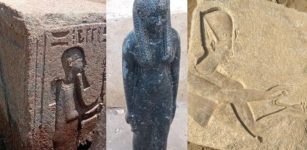 Pharaoh Ramses II Comes One Step Closer To The Gods In The Company Of Hathor, Sekhmet and Ptah – Statues Discovered
Archaeology | Aug 10, 2020
Pharaoh Ramses II Comes One Step Closer To The Gods In The Company Of Hathor, Sekhmet and Ptah – Statues Discovered
Archaeology | Aug 10, 2020 -
 An Expert Explains Why Tutankhamun’s Tomb Remains One Of The Greatest Archaeological Discoveries
Archaeology | Nov 2, 2022
An Expert Explains Why Tutankhamun’s Tomb Remains One Of The Greatest Archaeological Discoveries
Archaeology | Nov 2, 2022 -
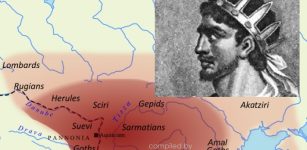 Attila The Hun: The Destroyer Of Rome Among Most Fearsome Enemies The Empire Ever Faced
Featured Stories | Jun 24, 2019
Attila The Hun: The Destroyer Of Rome Among Most Fearsome Enemies The Empire Ever Faced
Featured Stories | Jun 24, 2019 -
 Geronimo: Story About This Western Indian Chief Will Never Die
Featured Stories | Jul 21, 2018
Geronimo: Story About This Western Indian Chief Will Never Die
Featured Stories | Jul 21, 2018 -
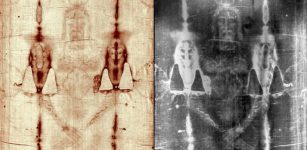 Blood Discovered On The Shroud Of Turin – Strand Of Jesus’ DNA Can Be Found – Researchers Say
Archaeology | Jul 19, 2017
Blood Discovered On The Shroud Of Turin – Strand Of Jesus’ DNA Can Be Found – Researchers Say
Archaeology | Jul 19, 2017 -
 Constructing Noah’s Ark – Re-Examination Of The Original Biblical Wording
Biblical Mysteries | Feb 1, 2018
Constructing Noah’s Ark – Re-Examination Of The Original Biblical Wording
Biblical Mysteries | Feb 1, 2018 -
 Remarkably Well-Preserved Afragola Village After The Vesuvio Eruption 4,000-Years Ago
Archaeology | Sep 29, 2022
Remarkably Well-Preserved Afragola Village After The Vesuvio Eruption 4,000-Years Ago
Archaeology | Sep 29, 2022 -
 Hidden Manuscripts Reveal Ancient Sacred Wisdom Of The Gods And Surprises
Artifacts | Mar 23, 2019
Hidden Manuscripts Reveal Ancient Sacred Wisdom Of The Gods And Surprises
Artifacts | Mar 23, 2019 -
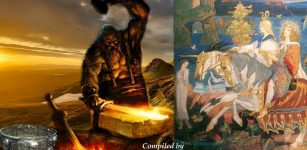 Goibniu: The Sword Smith Of Tuatha De Danann Who Forged Weapons For Battles In Celtic Mythology
Celtic Mythology | Jan 31, 2020
Goibniu: The Sword Smith Of Tuatha De Danann Who Forged Weapons For Battles In Celtic Mythology
Celtic Mythology | Jan 31, 2020 -
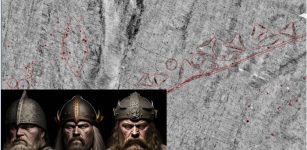 Radar Discovery Of Unknown Viking Age Stone Ship, Burial Mounds And Houses In The Trondheim Fjord
Archaeology | Mar 28, 2023
Radar Discovery Of Unknown Viking Age Stone Ship, Burial Mounds And Houses In The Trondheim Fjord
Archaeology | Mar 28, 2023 -
 Mysterious Etruscan Stone Structures Hidden In The Malano Forest – Evidence Of Ancient Unknown High-Tech Knowledge?
Featured Stories | Dec 19, 2020
Mysterious Etruscan Stone Structures Hidden In The Malano Forest – Evidence Of Ancient Unknown High-Tech Knowledge?
Featured Stories | Dec 19, 2020 -
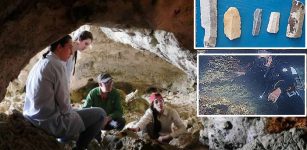 Early Expansion Of Homo sapiens: Underwater Caves Give New Clues About Sicily’s First Residents
Underwater Discoveries | Oct 15, 2024
Early Expansion Of Homo sapiens: Underwater Caves Give New Clues About Sicily’s First Residents
Underwater Discoveries | Oct 15, 2024 -
 12,000-Year-Old Archaeological Evidence Of Human-Dog Friendship In Alaska
Archaeology | Dec 5, 2024
12,000-Year-Old Archaeological Evidence Of Human-Dog Friendship In Alaska
Archaeology | Dec 5, 2024 -
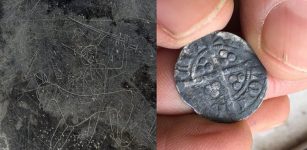 Rare Viking Graffiti And Artifacts Found In Dublin – Depiction Of God Odin Riding Sleipnir Followed By Huginn And Muninn?
Archaeology | Mar 31, 2018
Rare Viking Graffiti And Artifacts Found In Dublin – Depiction Of God Odin Riding Sleipnir Followed By Huginn And Muninn?
Archaeology | Mar 31, 2018 -
 Crusader-Era Sword Discovered At Previously Unknown Burial Site In Finland
Archaeology | Oct 16, 2023
Crusader-Era Sword Discovered At Previously Unknown Burial Site In Finland
Archaeology | Oct 16, 2023 -
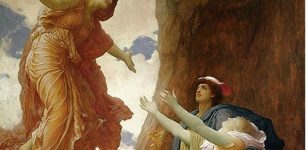 Persephone: Greek Goddess Of The Coming Spring And Lady Of The Land Of The Dead
Featured Stories | Jun 26, 2021
Persephone: Greek Goddess Of The Coming Spring And Lady Of The Land Of The Dead
Featured Stories | Jun 26, 2021 -
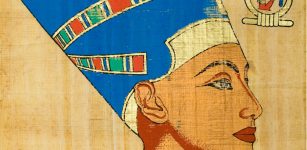 What Happened To The Mysterious And Beautiful Queen Nefertiti?
Featured Stories | Apr 4, 2017
What Happened To The Mysterious And Beautiful Queen Nefertiti?
Featured Stories | Apr 4, 2017 -
 Archaeologists And Historians Argue With Geneticists Over Controversial Viking DNA Study
Archaeology | Feb 24, 2017
Archaeologists And Historians Argue With Geneticists Over Controversial Viking DNA Study
Archaeology | Feb 24, 2017 -
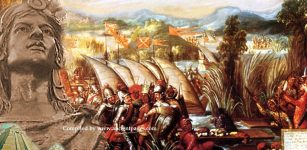 Cuauhtémoc: Brave And Determined Ruler Of Tenochtitlan And The Last Aztec Emperor
Featured Stories | Feb 28, 2018
Cuauhtémoc: Brave And Determined Ruler Of Tenochtitlan And The Last Aztec Emperor
Featured Stories | Feb 28, 2018 -
 Sophisticated Masonry In Anasazi Dwelling Ruins At Mesa Verde National Park, Colorado, USA
Civilizations | Aug 11, 2015
Sophisticated Masonry In Anasazi Dwelling Ruins At Mesa Verde National Park, Colorado, USA
Civilizations | Aug 11, 2015

